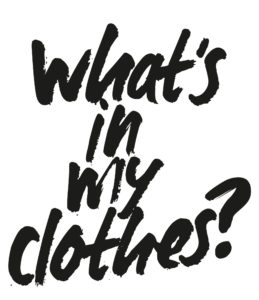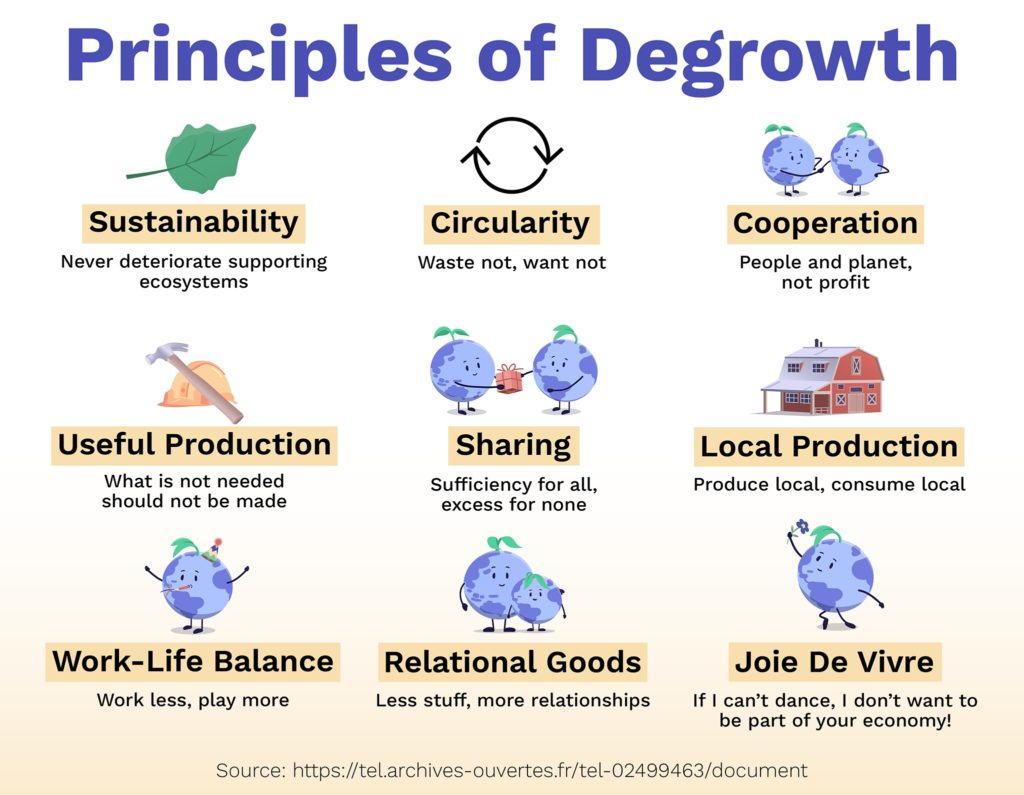Module 2 part b

Fashion’s business model
Let’s start this module by looking closely at Fashion Revolution’s manifesto point #9. It pictures a time when the fashion industry is based less on profits and market growth and more on human wellbeing and sustainability.

QUESTION: how close do you think we are to this now? What do you think? Write down your thoughts.
Module 2a shows that, when we start to ask what’s in our clothes, a complicated picture of fashion’s supply chains starts to emerge. At every stage, the processes which turn raw materials into clothing fabrics can cause harm to people and environment. We know that it’s possible to make some of these processes less damaging, for example, by farming cotton organically and/or using non-toxic dyes. But, is changing every process in a supply chain the best way to create a sustainable fashion economy? Or does that economy need to be organised in a radically different way?
We finish module 2 by looking critically at the ‘fast fashion’ business model which provides us with most of our clothes and introducing an alternative model based on the concept of ‘degrowth’.
i. Fast fashion on steroids
The problems caused by fast fashion’s business model are often in the news, most recently in a 9 minute episode of Deutsche Welle’s Planet A series which focuses on a relatively new clothing brand called Shein. It says “Chinese fashion giant is taking what we thought was already bad to new extremes. They produce ultra-cheap clothes at ultra-fast speed, creating an ultra-big hype on social media” and asks “But how do they do it?”
TASK: we would like you to watch this episode and to pause it every now and again to take some notes in answer to the following questions.
QUESTION: how does the ‘fast fashion’ business model work? How is Shein ‘fast fashion on steroids’? What damage to people and planet is done in their supply chains? What do Shein shoppers say these clothes are like to buy and to wear?
ii. The fast fashion business model
People who study how fashion’s supply chains work can show us how this fast fashion business model started out, which brands pioneered and developed it, how their supply chains were organised, and how fashion shoppers were involved in these relationships. For this task, we want you to look closely at the ways in which this fast fashion model has changed, how it has led to this latest Shein version.
Check ultra fast fashion model here
TASK: Look closely at these diagrams in the links above to see how the supply chains in this fast fashion business model work, and how they have changed.
QUESTION: What is ‘fast’ about fast fashion? How has it become ‘ultrafast’? How has Shein made it even faster? Which brands are associated with which versions of fast fashion? What does ‘fast fashion’ seem to mean to the people working in these supply chains? What is it like to shop for these clothes? What qualities do they have?
EXTRA STUDY: for an account of the history of fashion production and consumption that builds up to the emergence of the fast fashion business model in the late Twentieth Century, read pages 1449-1451 of this academic article in the Journal of Marketing Management.
iii. Hack the system: good, cheap clothes
If we agree that the clothing that the fast fashion business model gives us are relatively cheap, poor quality and are often not worn very many times before being thrown away, what is the alternative? Here, we want you to think if and how you could hack this business model to wear affordable clothes that do less damage to the people and the environment. There are two tasks:
TASK 1: Watch this 11 minute video in which people living all over the world talk about their ‘clothing love stories’: the clothes they love and wear the most.
QUESTION: What items of clothing do the people in this video say they love, and why? Where did they get these from? How, where and with what do they wear them? imagine that you were asked to appear in this video. What item of clothing would you choose to talk about? What ‘clothing love story’ would you tell?
TASK 2: Compare this loved item of clothing to a fast fashion item that you have by calculating it’s ‘cost per wear’.
QUESTION: When we calculate ‘cost per wear’, which clothes seem to be the cheapest? What do you think of fashion designer Vivienne Westwood suggestion that we should “Buy less, choose well, make it last”? Is this a way to find and wear cheap, fashionable clothes outside the fast fashion business model?
EXTRA STUDY: read this academic study to see what researchers find when they ask people working inside the fashion industry if and how its business model can become more sustainable.
iv. Create a new fashion business model
If we want to work towards the fashion industry that Manifesto Point #9 says “measures success by more than just sales and profit” and “places equal value on financial growth, human wellbeing and environmental sustainability”, one argument is that a radically different business model is the only option. A model that does away with the planet-destroying assumption that businesses need to ‘grow’. A model that is based on the concept of ‘degrowth’.
So what is ‘degrowth’ and what would a fashion industry based on this concept look like? There are two tasks here to help you answer this question.

TASK 1: Degrowth is a concept that has been developed to imagine an alternative to the current capitalist system that shapes our lives today. This infographic show nine main principles that it brings together.
QUESTION: What are these 9 principles? Which ones are you familiar with? Which ones are new? Why do you think that ‘joie de vivre’ is in here? How many of these principles are somehow part of the ‘fashion love story’ you imagined earlier?
TASK 2: So what would degrowth look like in the fashion industry? Here, we would like you to watch a TikTok video explainer made by fashion designer Niharika Elety.
QUESTION: How does Niharika Elety link past fashion with fast fashion, and fast fashion with degrowth? How does she explain what ‘economics’ means in a degrowth society? Go back to your answer to the first question at the top of this page. How close do you think we are to Manifesto Point #9 now? Are you already helping to create it, even in a small way? What else could you do? What would you worry about?
EXTRA STUDY 1: if you want to understand more about this concept, who came up with it, and the answers to the questions that people often ask about it, read this blog post by Ecological Economist Timothée Parrique.
EXTRA STUDY 2: if you want to learn more about what a fashion industry organised around the concept of degrowth might look like, and the answer to the kinds of questions that people often ask about it (like ‘what about the garment workers?’), listen to this episode of the Wardrobe Crisis podcast with Economic Anthropologist Jason Hickel.
v. Reflection
In module one we asked you to think about who made your clothes and what statements they can make about us? In this module, we developed this idea by asking ‘what’s in my clothes?’, and the simple answer was ‘a lot’. Now we know more about the ways in which mechanical, chemical and labour processes are strung together with countless others in fashion supply chains that often span the globe. We know that those of famous high street and online brands are most often organised according to a ‘fast fashion’ business model in which profit and economic growth are much more important that human wellbeing and environmental sustainability. So maybe we should be thinking about different clothes, and different sets of statements that they could be making about us, if fashion’s business model was different. This is what we would like you to reflect upon now.
TASK 2: We’d like you to go back to the section when we asked you to tell your own ‘fashion love story’. The item of clothing you chose, and the story that you could tell about it, could be a great way to think about what you have learned in this module.
QUESTION: What fashion statement could this item make about you, your values and what world you would like to live in? What do you think about the idea that ‘loved clothes last’? Do you agree with it? What do you think about the call to ‘Buy less, choose well, make it last’? Could this make a difference to the kinds of clothes you shop for, and how much you might pay for them, in the future? Are some of the principles of degrowth already part of your life? Or part of the supply chains of brands that you like?
You can express your findings in any way you like: writing, sketching, photoshopping, whatever works for you!
